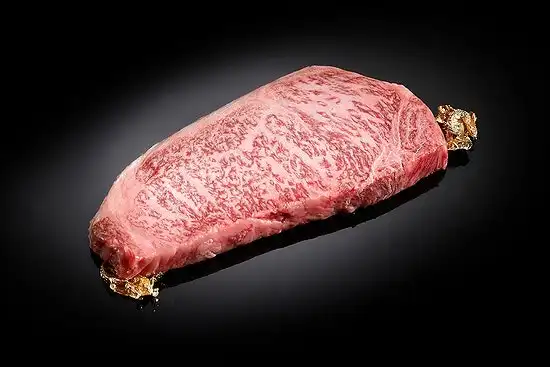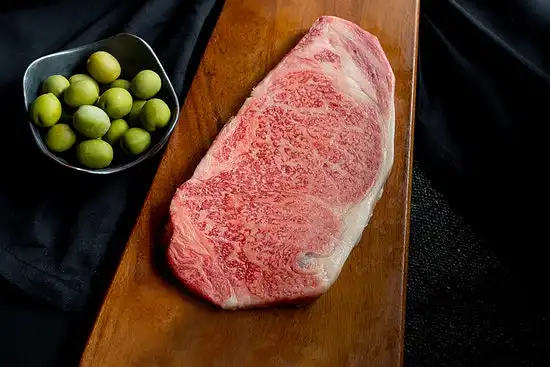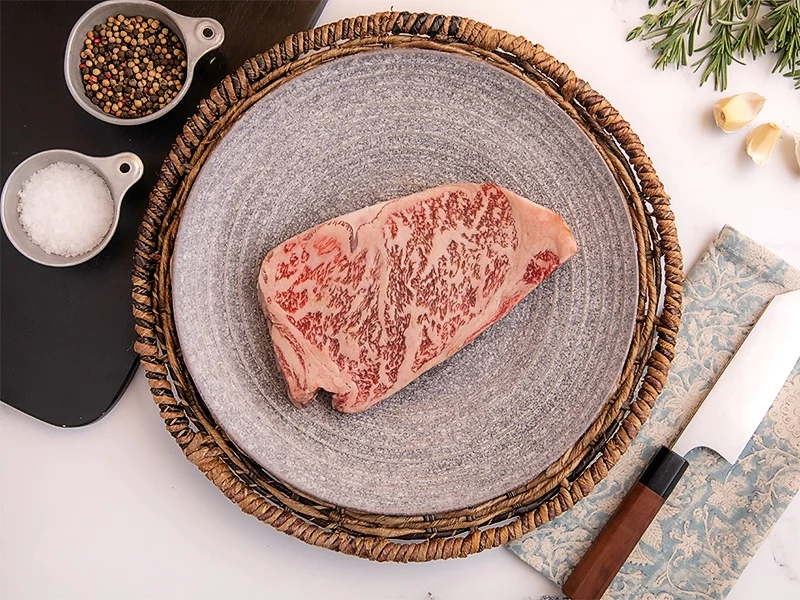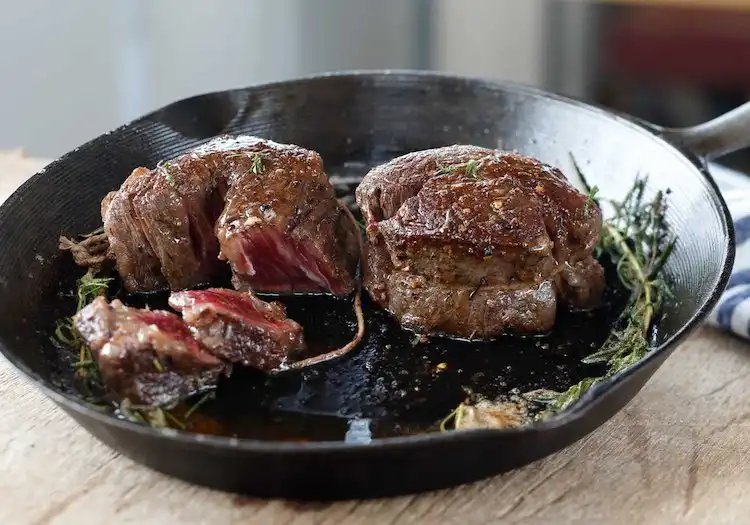The Most Expensive Steak Cuts Guaranteed to Hurt Your Wallet

They say that money can’t buy happiness. Whoever believes this has clearly never bitten into a perfectly cooked $250 A5 Kobe steak.
So, we’re going to be taking a deep dive into four of the most expensive steaks you can order today and one that is a once in a lifetime experience.
Whether or not these steaks are worth their eye watering prices comes down to your personal preference (and disposable income).
The most expensive steaks you can get delivered to your house
Suppose you’re looking for a fantastic steak, but would like the experience of cooking it yourself, and don’t want to pay a huge restaurant premium. In that case, you’ll be happy to know that there has been an explosion in the number of high-quality online butchers in recent years.
Because of this rapid rise in online steak sellers, we’re about to not only tell you about some of the best steaks in the world; we’re also able to show you where you can buy them without ever having to leave the house.
Related – The best steak knife sets
1. Japanese A5 Kobe Beef
Any conversation about the highest quality beef in the world wouldn’t be complete without talking about Kobe Beef.
We’ve already written about Kobe and Wagyu beef in some detail, but, to give you an overview, Japanese Wagyu beef is considered to be some of the finest beef in the world and Kobe beef is some of the finest Wagyu you can buy. Very much the cream of the crop.
The secret behind Kobe beef’s reputation is that meat taken from the Kuroge Washu cattle that give us Wagyu beef is intensely marbled. This deep spread of fine-grained intramuscular fat provides the meat with a rich buttery flavor and a deliciously smooth texture.
To ensure quality, Kobe beef undergoes a strict grading process, with A5 being the highest grading possible, and only 3000 head of cattle making the cut annually. Each of these cattle is then given a specific 10-digit serial number to verify the authenticity of the meat can. The export of Kobe beef outside of Japan is heavily regulated.
Kobe beef comes exclusively from Kuroge Washu cattle reared in the Hyogo prefecture in Japan. Hyogo has historically been the capital of the Japanese beef trade and is to beef what the Champagne region of France is to sparkling wine.
The combination of quality and scarcity has elevated Kobe beef steaks to some of the best, and most expensive, meat in the world.
Where to buy – Crowd Cow A5 Kobe Beef New York Strip Steak
Crowd Cow consistently makes our list of the best online meat suppliers because of its products’ quality and sustainability. As one of the only licensed providers of authentic Kobe Beef in the US, Crowd Cow represents a rare opportunity to sample Kobe beef outside of a restaurant.
Their A5 Kobe Beef New York Strip Steak is packed with light, thinly ribboned marbling, giving it a rich umami flavor combined with a melt-in-your-mouth tenderness. It’s the exact opposite of a cheap cut, but if you’re looking for the pinnacle of gourmet beef you can cook at home, this is it.
2. Olive Wagyu
While Hyogo prefecture might still hold the crown as the beef capital of Japan, the other prefectures around the country still give them a run for their money. Each prefecture produces its own specialty Wagyu beef each year to compete in Japan’s famous Wagyu Olympics (yes, that’s a real thing).
Olive Wagyu is exactly what it sounds like, some of the best beef in the world raised on upcycled, toasted olive pulp to give the meat a unique and delicious flavor. The meat combines the amazing marbling Wagyu is famous for with high levels of heart-healthy oleic acid and recently won the top prize for “best fat” at the Wagyu Olympics.
Where to buy – Crowd Cow Exclusive Olive Wagyu
Olive Wagyu is produced by a handful of farmers in Shodoshima Island, a tiny, remote area in the Kagawa Prefecture.
In order to gain access to this exceptionally rare beef, the co-founder of Crowd Cow, Joe Heitzeberg, traveled to Japan to work directly with Masaki Ishii, the farmer who pioneered Olive Wagyu, and the governor of Kagawa Prefecture.
Having forged personal links with the farming community on Shodoshima, Crowd Cow can now offer small amounts of Olive Wagyu at certain times of the year. However, it also disappears as fast as they can import it.
3. Japanese Wagyu Beef
What makes Japanese Wagyu so special is the disposition of its fine-grained intramuscular fat, also referred to as marbling. Because of the importance of this marbling, any bulls who show a higher genetic predisposition towards intense marbling are highly sought after as breeding stud.

In turn, this gives the customer a surprising amount of choice when it comes to picking which type of world-class Japanese beef they want.
You could style your selection around a certain prefecture, such as Kobe beef or the almost as famous Miyazaki beef from the southern island of Kyushu. You could choose a beef fed on a certain diet, such as Olive Wagyu, or choose beef from one of the most widely celebrated genetic lines, such as Hida Beef.
Where to buy – Holy Grail Steak Co Hitachi-Gyu A5 Wagyu
We had to go for the Hitachi Gyu which comes from premier Japanese Black cattle from the Ibaraki prefecture.
Living conditions for the animals are luxurious with spacious barns and diets of locally grown feed.
The meat is known for its texture, with swirls of fat marbling resulting in an incredibly juicy steak with a buttery finish.
Holy Grail Steak Co’s A5 Hitachi Gyu Strip Steak is an excellent example of Hitachi Gyu. Not only is it one of the best cuts of steak, but it comes from some of the most richly marbled and delicately flavored beef in the world.
4. American Wagyu Beef
While Wagyu beef is strongly connected with Japan and the only authentic examples of beef from certain prefectures, such as Kobe beef, are imported, in the 1970s, a small number of Kuroge Washu cattle were exported to the U.S.

Once in the U.S., the smaller Kuroge Washu were bred with the larger Angus cattle for a larger yield, creating American Wagyu Beef. While not of the same quality or rarity as authentic Japanese Wagyu, American Wagyu is significantly easier to source and at a much more wallet-friendly price point.
However, it is worth noting that, while American Wagyu is a perfectly authentic product, anything marketed as American Kobe, and not imported from Japan, is about as authentic as Champagne made in California.
Where to buy – Snake River Farms American Wagyu Rolled Cap of Ribeye
We’ve written about the amazing quality of Snake River Farms meat before, and their American Wagyu rolled cap of ribeye is an excellent example of the fantastic products they provide.
Rated SRF Gold Grade, and therefore higher than USDA Prime, this cut also has a Beef Marbling Score (BMS) of 9+, indicating that it has abundant marbling. The beef raised by Snake River Farms is all 100% hormone-free, wet-aged for 21 days to improve flavor, and then hand-cut by a master butcher.
This ribeye has the prized fat cap attached, which can either be cooked as an individual portion or an innovative starter course.
The most expensive steak ever
So far we’ve concentrated on steaks that, while admittedly very expensive, are still obtainable for you to cook at home. There are, however, some steaks that are so rarified that you’ll only be able to find them in select restaurants and at a hefty price tag.
The Vintage Cote De Boeuf Rib Steak from Boucherie Polmard in France is one of the most expensive beef cuts on the market today.
This incredibly rare steak comes from one butcher in Paris, called Polmard Eleveur Boucher. The reason for its expense is the fact that the head butcher, Alexandre Polmard, ‘hibernates’ the beef for 15 years of aging. To put that in perspective, most beef is aged for around 21 days.
Once slaughtered, the beef is stored in Boucherie Polmard’s on-site food laboratory, where air chilled down to -45 °F is blown onto the meat at exactly 47 mph.
After 15 years of aging, the beef develops a rich and unique taste that has made it a favorite of Michelin-starred around the world.
Priced at $3,200 for a ribeye steak, before the restaurant applies their premium, the Boucherie Polmard’s steaks are technically available from their store. In reality, since they take 15 years to produce, restaurants like the Savoy and Épure have years of stock back-ordered.
If you happen to find yourself at chef Fabrice Vulin’s Caprice restaurant at the Four Seasons Hotel Hong Kong, you can add a 2lb Polmard rib steak to your order, which is expected to feed six, for a mere $4,000.
The most expensive steak cuts you can actually afford
If this article has filled you with a deep desire for great quality steak, but $4,000 seems like a little too much to be spending on one meal, don’t worry.
There are some fantastic cuts that you can get from your local butcher and the fact that they haven’ been fed on olives, imported from Japan, or aged for 15-years won’t make them any less delicious.
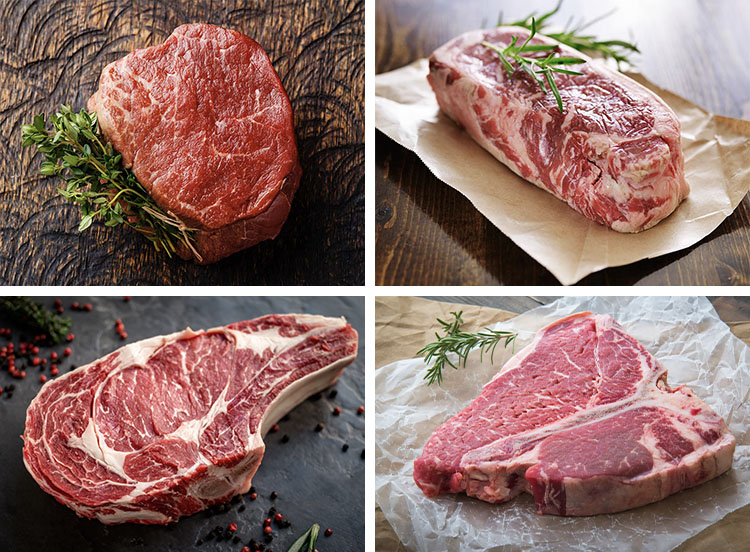
So, if you’re looking a great cut of beef to grill up for dinner, here is what we suggest:
1. Filet Mignon
Taken from the tenderloin’s narrower end, the Filet Mignon is a section of muscle that doesn’t see much use during the cow’s life, making it exceptionally tender.
It’s not intensely fatty, so you might need to add some extra fat if you’re cooking it to any more than rare, but it does have a delightfully subtle flavor and melt-in-the-mouth texture.
2. New York Strip

One of the best-known steakhouse cuts, the New York Strip comes from the loin. It has more fat and a tighter texture than the Filet Mignon, giving it a characteristic chew and a deep beefy flavor.
3. Porterhouse

The Porterhouse and the T-Bone are essentially the same steaks cut from different sections of the loin. The iconic bone in both steaks separates sections of tenderloin and strip steak. The Porterhouse has more tenderloin and the T-Bone has more strip steak.
The Porterhouse, or T-Bone, is ideal if you don’t want to choose between the tenderloin’s smooth texture or the more pronounced meaty flavor of the strip steak.
4. Bone-in Ribeye
Sometimes referred to as the king of steak, the Ribeye is cut from the upper ribcage of the carcass, generally between the 6th and 12th rib.
This steakhouse favorite combines a good amount of marbling with the tenderness that comes from the fact that the longissimus dorsi muscle that the Ribeye is cut from doesn’t see much use during the steer’s lifetime.
Wrapping it up
When it comes to food, a well-cooked steak is a symbol of luxury and, depending on how rarified the beef your eating is, it can come with a luxuriously high price tag.
However, as amazing as rare and expensive beef cuts can be, you can still get that high-end restaurant feeling from a good cut from your local butcher cooked to perfection on your own grill.
Are you lucky enough to have sampled some Olive Wagyu or even Vintage Cote De Boeuf from Boucherie Polmard? Did the taste actually live up to the hype? We’d love to hear about it in the comments section below.



